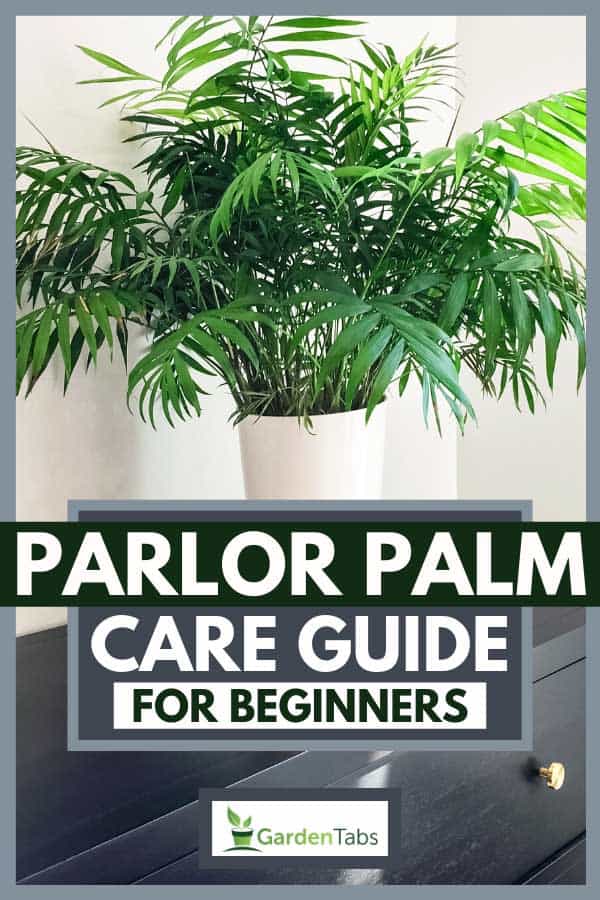
Do you love the lush, dense foliage of the tropics? Do you adore anything that reminds you of warmer, sunnier climates? And do you live in a chilly place where a palm tree wouldn't stand a chance growing outside? If you answered yes to all of these questions, you are in luck - the Parlor Palm might be the perfect houseplant for you! A small, hardy variety of palm tree with long, narrow leaves, the Parlor Palm grows in clusters of thin, graceful trunks and typically reaches heights of 3' to 4' at maturity. Due to its tropical appearance, superior air cleaning ability, and adaptability to low light and temperatures, it's become a popular houseplant throughout the world.
What is a Parlor Palm?
The parlor palm, from the family Chamaedorea, is a small variety of palm tree that is native to the rainforests of Southern Mexico and Guatemala. Although they reach heights of 9' to 10' in their natural habitat, parlor palms grown indoors are usually smaller at 3' to 4', sometimes reaching 6' under the right circumstances. At an early age, they start producing flowers that are light red or yellow, have a strong fragrance, and resemble mimosa flowers, although they rarely bloom when grown indoors. This variety of palm is also cultivated for xate, or the palm fronds that are used in flower arrangements and church services since they can survive for 40 days after harvest.
Among palm trees, the parlor palm is unusual because they can easily survive low light conditions and temperatures as cold as 50 degrees Fahrenheit. These qualities made them one of the most popular houseplants in the world, cultivated indoors since Victorian times. Although they do tolerate low temperatures, they are intolerant of frost and need to be kept indoors during the winter in cool climates.
How to Grow a Parlor Palm
Depending on the climate, parlor palms can be grown either indoors or outdoors. In the United States, they're most commonly grown as a houseplant since they can only survive outside in the heat of Zones 10-12. 3-gallon pots make ideal planters for the parlor palm, as they need plenty of room to expand and grow.
The parlor palm is considered a slow-growing plant and typically takes years to reach its full height of 3' to 6', taking even more time if it gets minimal sunlight. However, this means that it also typically lives a very long life and can even be passed on within families for generations.
Whether you grow your parlor palm indoors or outdoors, it should be planted in loamy, moist, well-drained soil. You can enrich the soil before planting by blending in nutrient-filled compost. Parlor palms generally prefer soil with an alkaline to neutral pH level of 5.1 to 7.5.
One of the quickest ways to accidentally kill a parlor palm is giving it too much light. The native habitat of parlor palms is the dappled sunlight of a rainforest floor, so placing them somewhere with northern or eastern sun exposure is best - they'll burn in strong sunlight. A good rule of thumb is to check if your palm casts a shadow - if it does, it's receiving a healthy amount of light.
Overwatering is something else to be cautious of when growing parlor palms. The soil should be evenly moist, but not waterlogged. Empty the drainage tray every time you water to make sure your palm isn't sitting in standing water. However, even though parlor palms are picky about the amount of water in their soil, they love water in the air around them! Keep humidity levels high by spraying them with water once or twice a day and running a small humidifier in the winter.
Parlor palms are low maintenance plants, and this is reflected in their fertilizer requirements. Give them a dose of 20-20-20 liquid fertilizer once a month during the growing season and once every other month during the winter.
How to Plant Parlor Palm Seeds in 6 Easy Steps
- Mix equal parts potting soil, perlite, and compost, and add it to a pot that is at least 12" deep and 8" wide with adequate drainage holes on the bottom.
- Plant a parlor palm seed in the center of the pot and cover it with 1/4" of soil.
- Gently water the seed, and then slide a small thermometer into the soil. Cover the pot with a layer of plastic wrap and secure it with twine or a rubber band around the top of the pot.
- Put the pot on top of a heating pad in a dimly-lit area and use the heating pad to make sure the pot stays heated between 90 and 100 degrees Fahrenheit.
- Check the soil's moisture every few days and water as necessary to keep the soil damp to the touch.
- After the seed has sprouted, remove the plastic cover, and keep the pot heated to around 80 degrees Fahrenheit.
Growing Parlor Palms Outdoors
Although parlor palms are typically grown as houseplants, they can also be grown outdoors in Zones 10-12. If you live somewhere that doesn't have a killing frost every fall and winter, parlor palms can survive outside. Just make sure to plant them in a spot with moist, well-drained soil that doesn't get much direct sunlight.
If you live in a climate that is warm for most of the year but gets below freezing a few times every winter, you could plant your parlor palms in containers and bring them inside when temperatures drop. This also makes it convenient to move your palms around to ensure that they're receiving the proper amount of sunlight.
Are you interested in growing full-sized palm trees near your house? Check our article Where Are Palm Trees From (And Where Can They Grow)? to find out if they'll grow in your area.
Parlor Palm Gallery
1. A Natural Work of Art
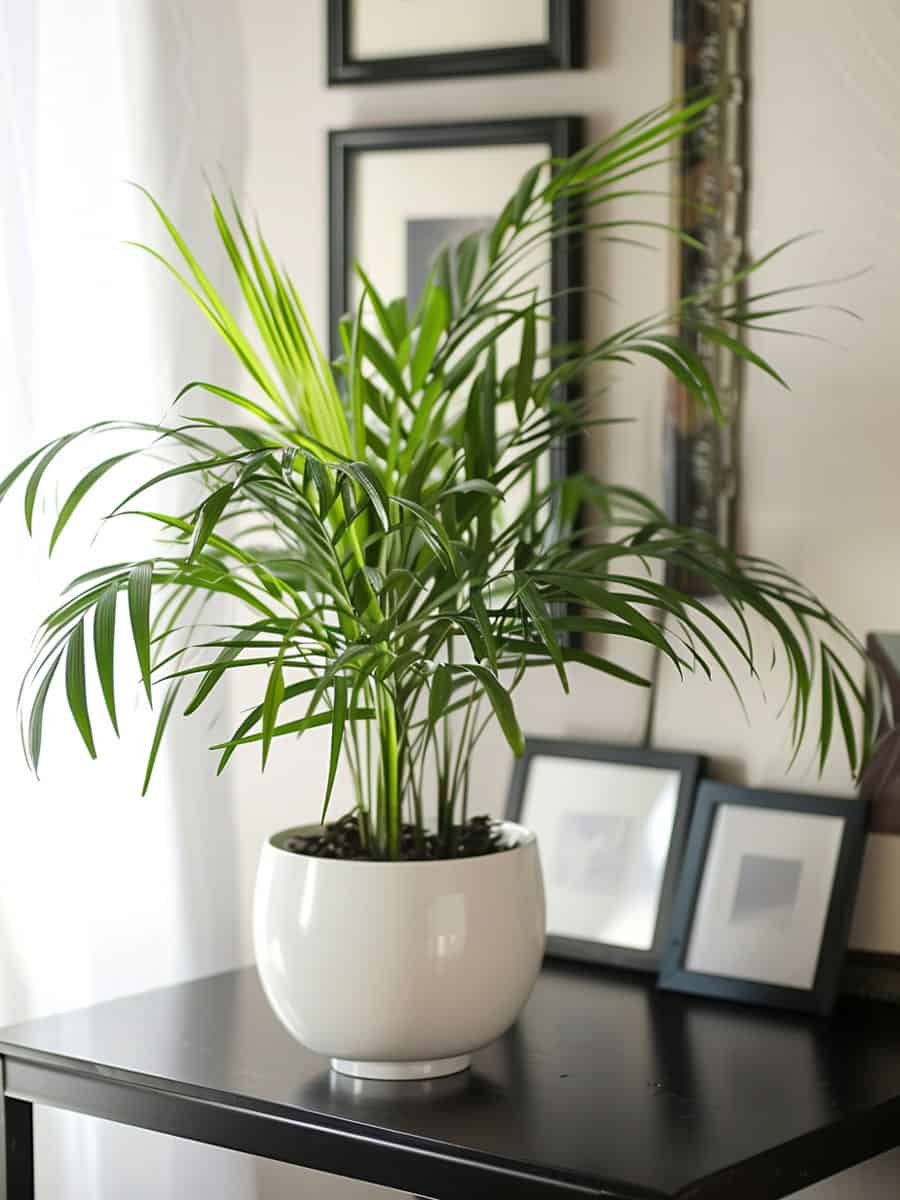
This little parlor palm is right at home among a collection of tropically themed artwork.
2. Beauty in Simplicity
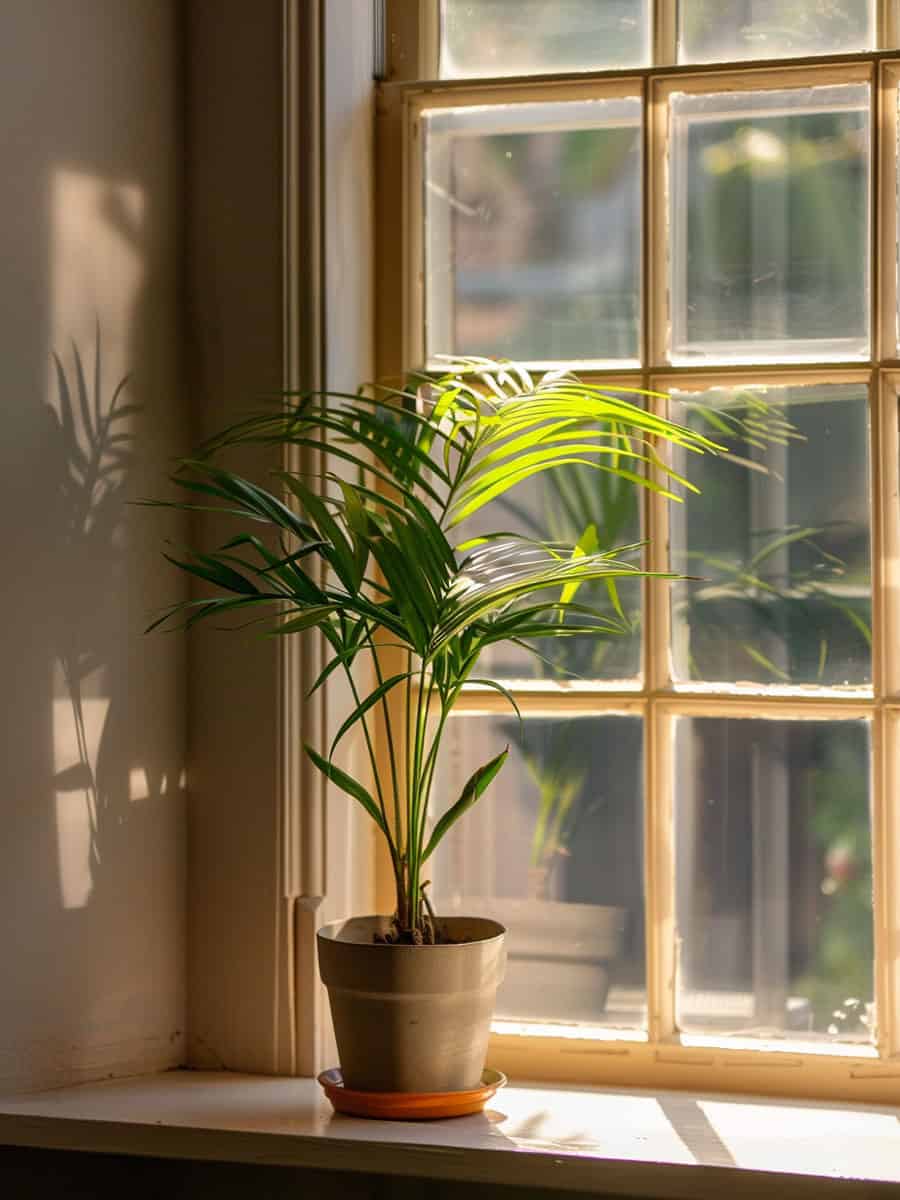
This young parlor palm is all set to have a strong start in life. Plus, judging by the shadow it's casting, it looks like it has the perfect amount of light!
3. Life is Better with Friends
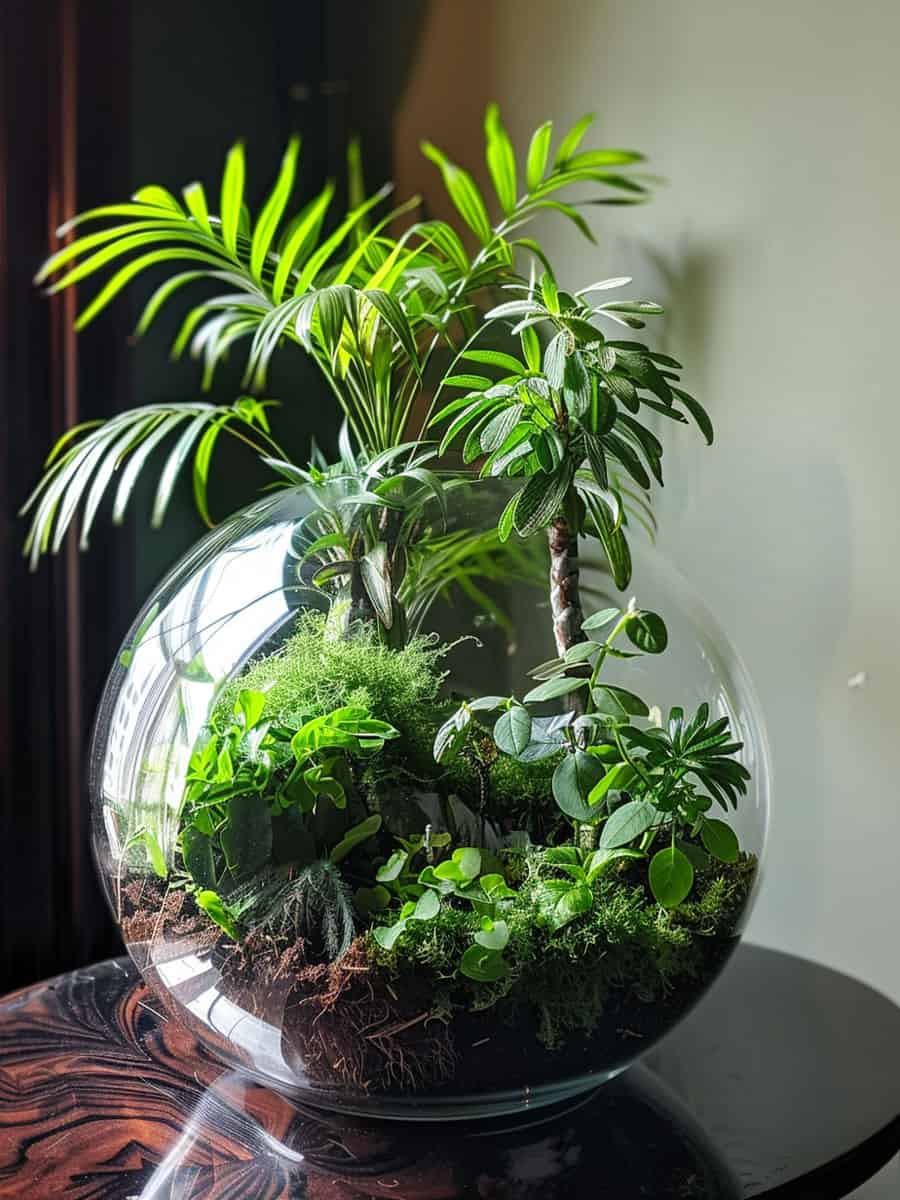
The parlor palm planted in this terrarium has a few friends - polka dot plant, oregano, and a selection of mosses.
4. Peaceful Vibes
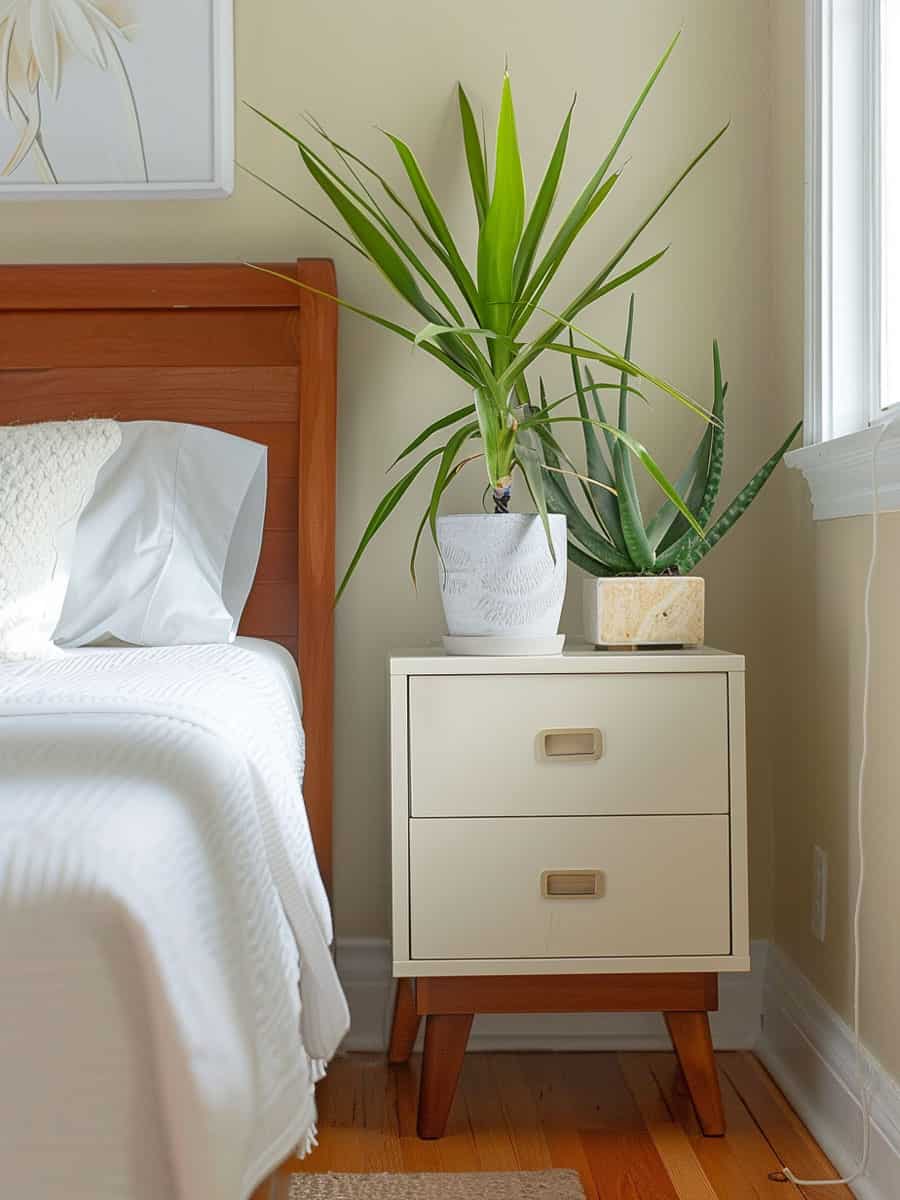
This bedroom nightstand is full of natural beauty, and with the air cleaning powers of a parlor palm and aloe, the air will be fresh and clean all night long.
5. Three's Company
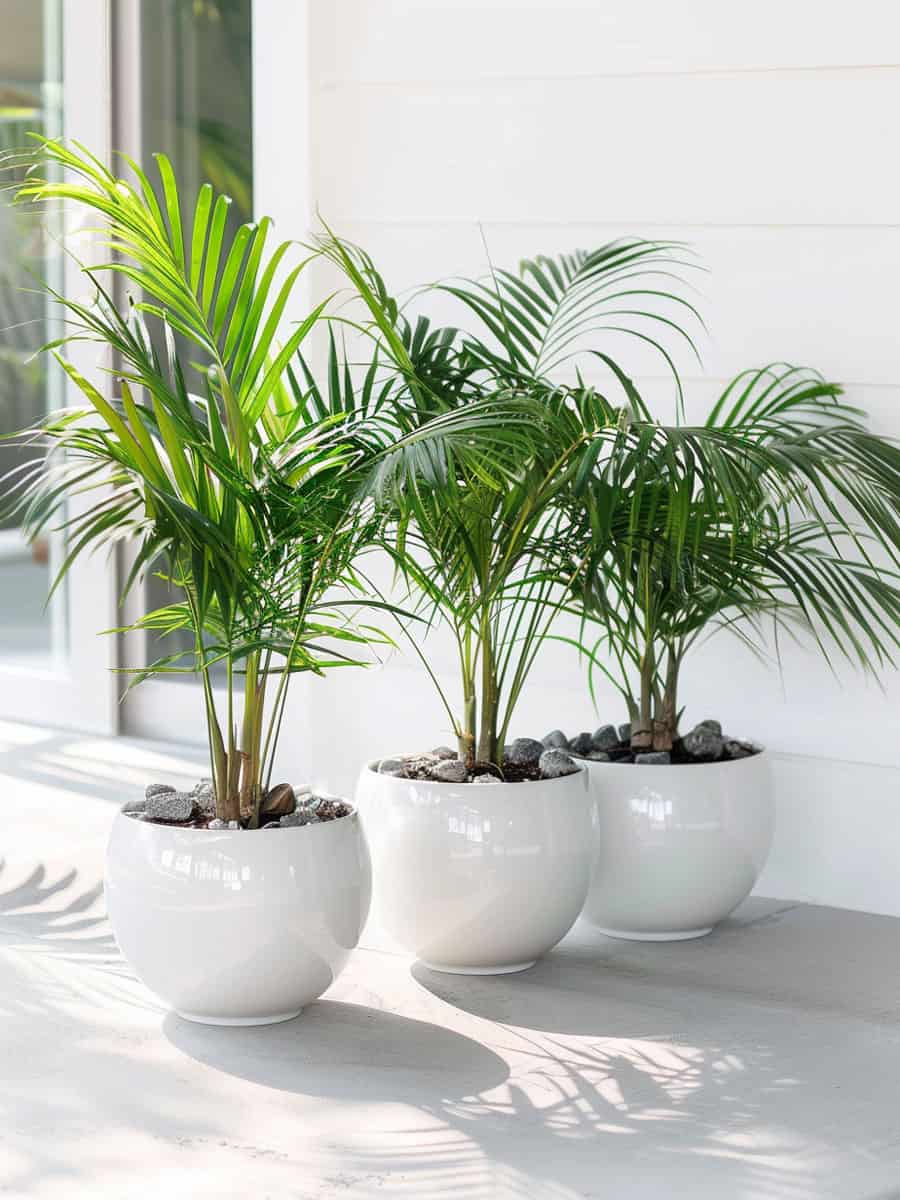
A trio of parlor palms looks stunning in a matching collection of stoneware pots.
6. Life in a Bubble
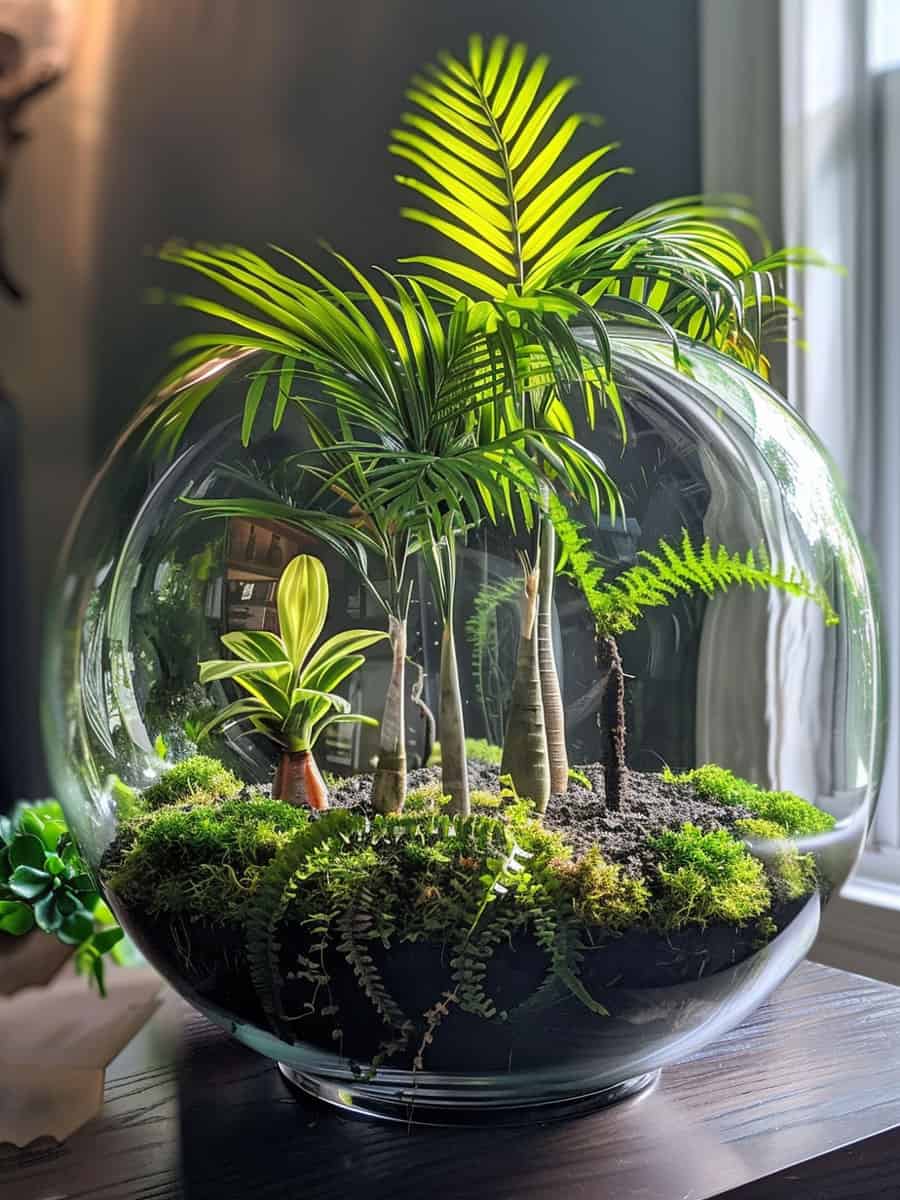
Parlor palms are the perfect match for terrariums, as you can see from this adorable setup that also includes a polka dot plant and a collection of rocks.
7. Straight from the Tropics
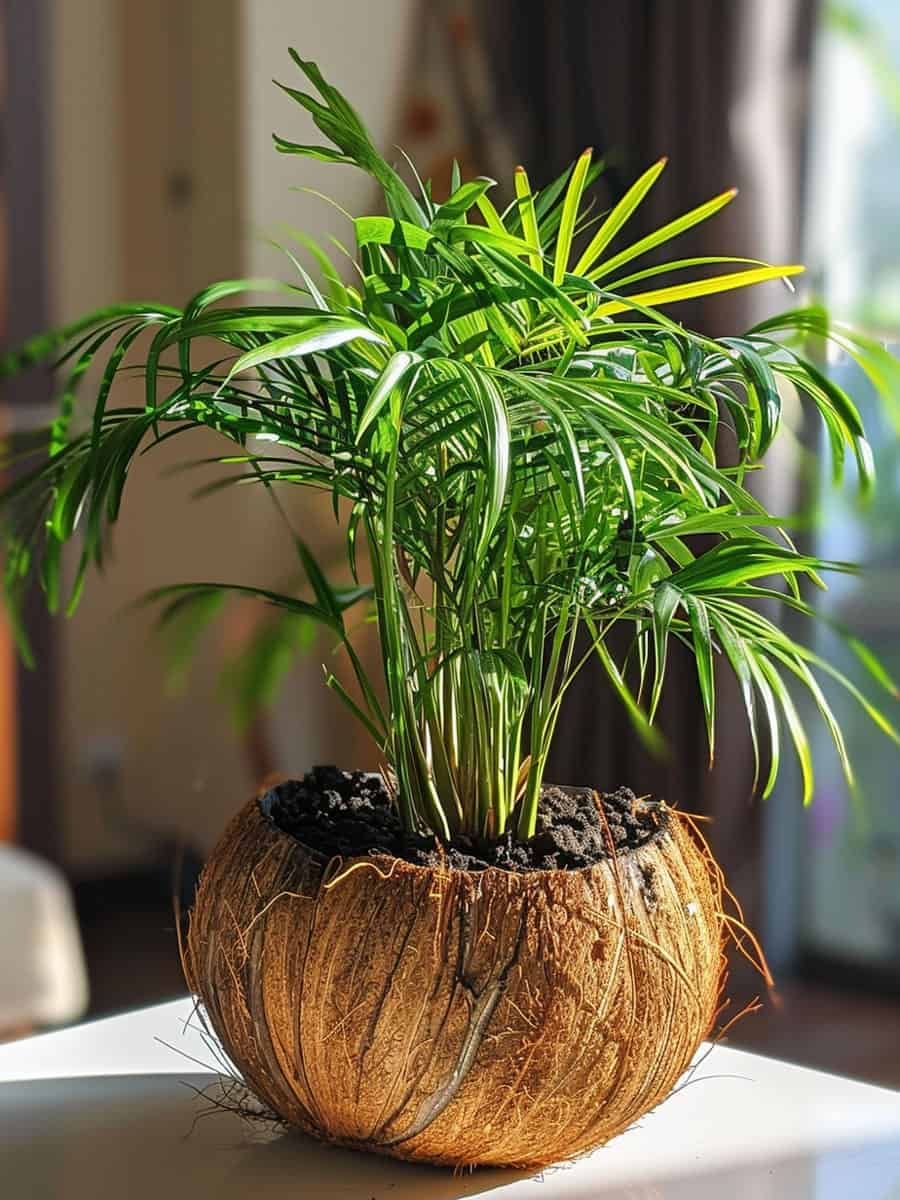
Take a cue from this lovely photo and enhance the tropical vibes of your parlor palm with a natural pot made from coconut coir.
8. Dream House
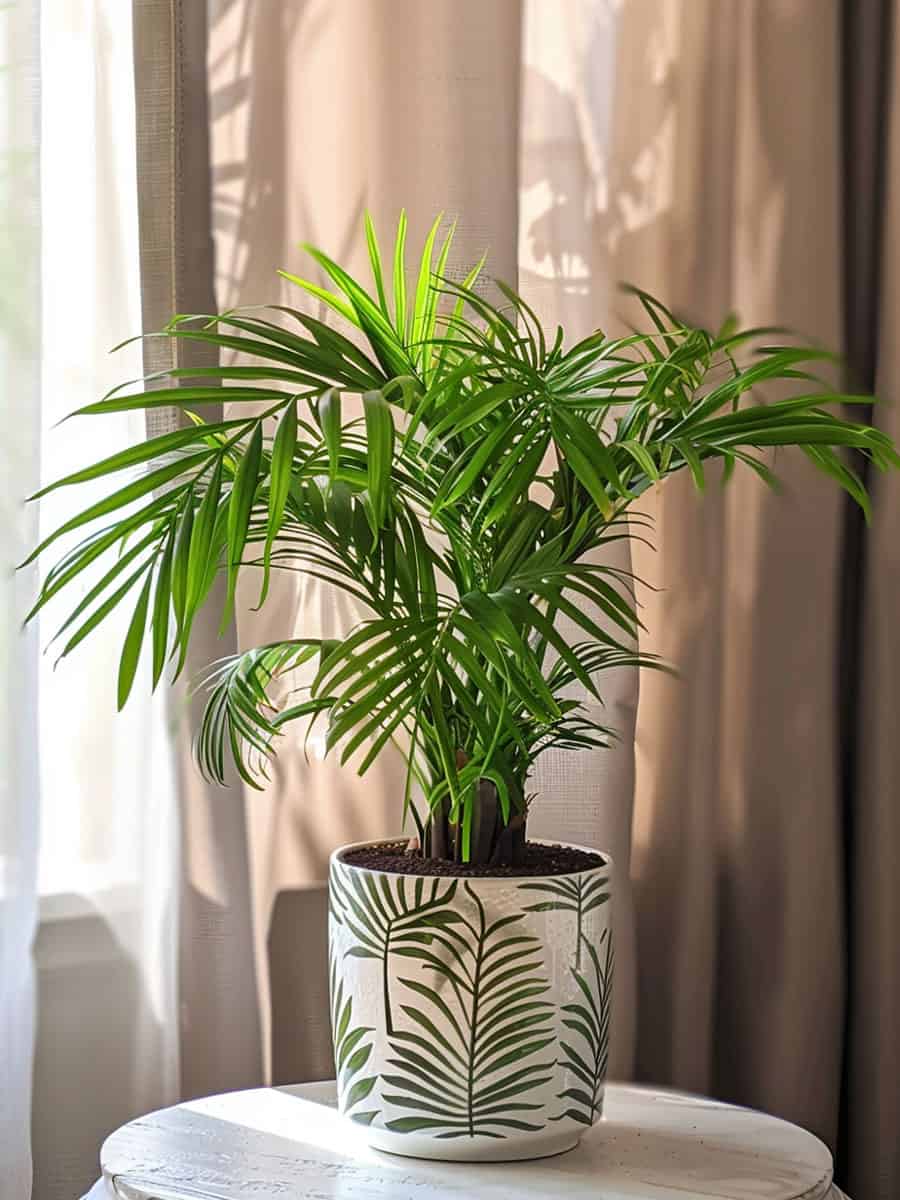
Every plant is beautiful, but you can enhance its beauty even more by choosing the perfect container for it to live in! The fern pattern on this parlor palm's pot perfectly echoes the lines of its leaves.
9. Green Space
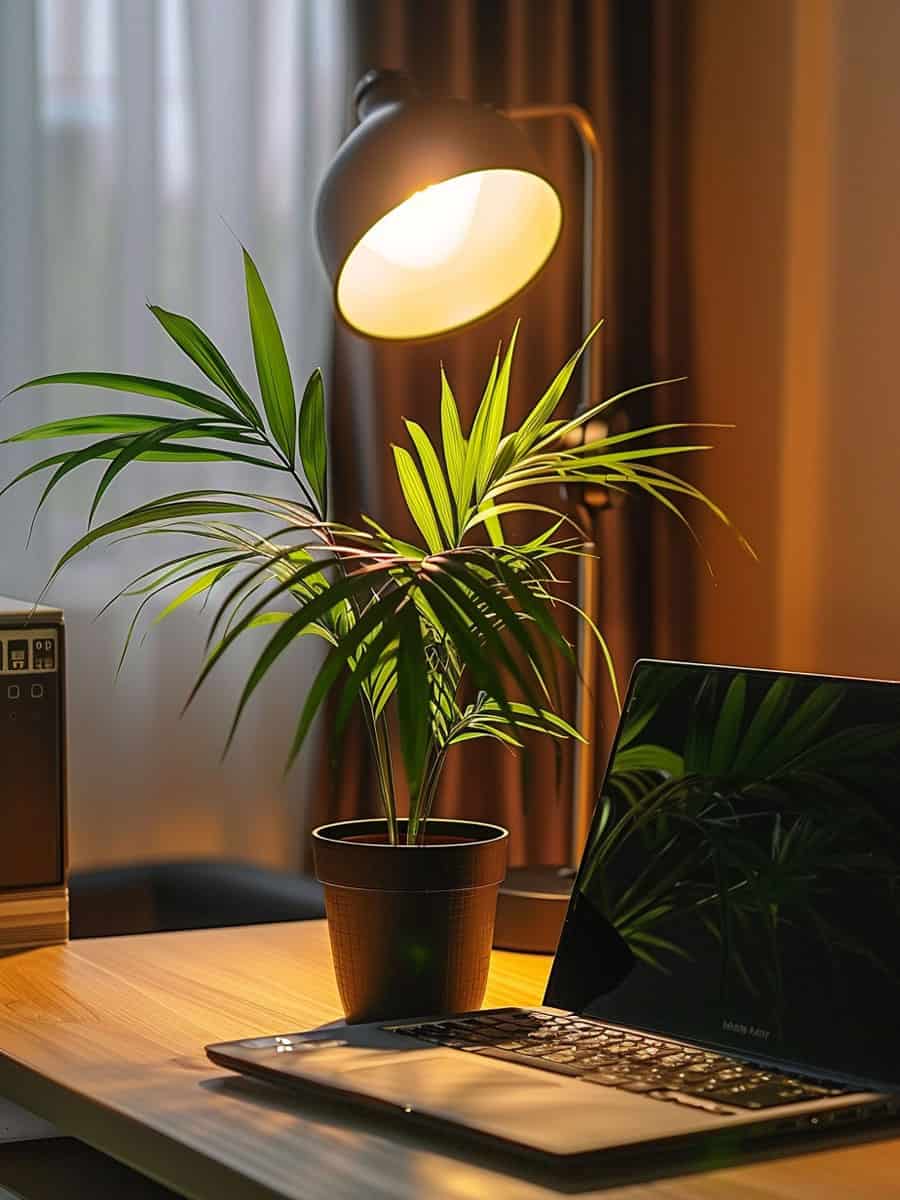
Soothe your eyes and your soul by making your plants part of your everyday life, like this study space that features a parlor palm and a golden pothos.
10. Land Before Time
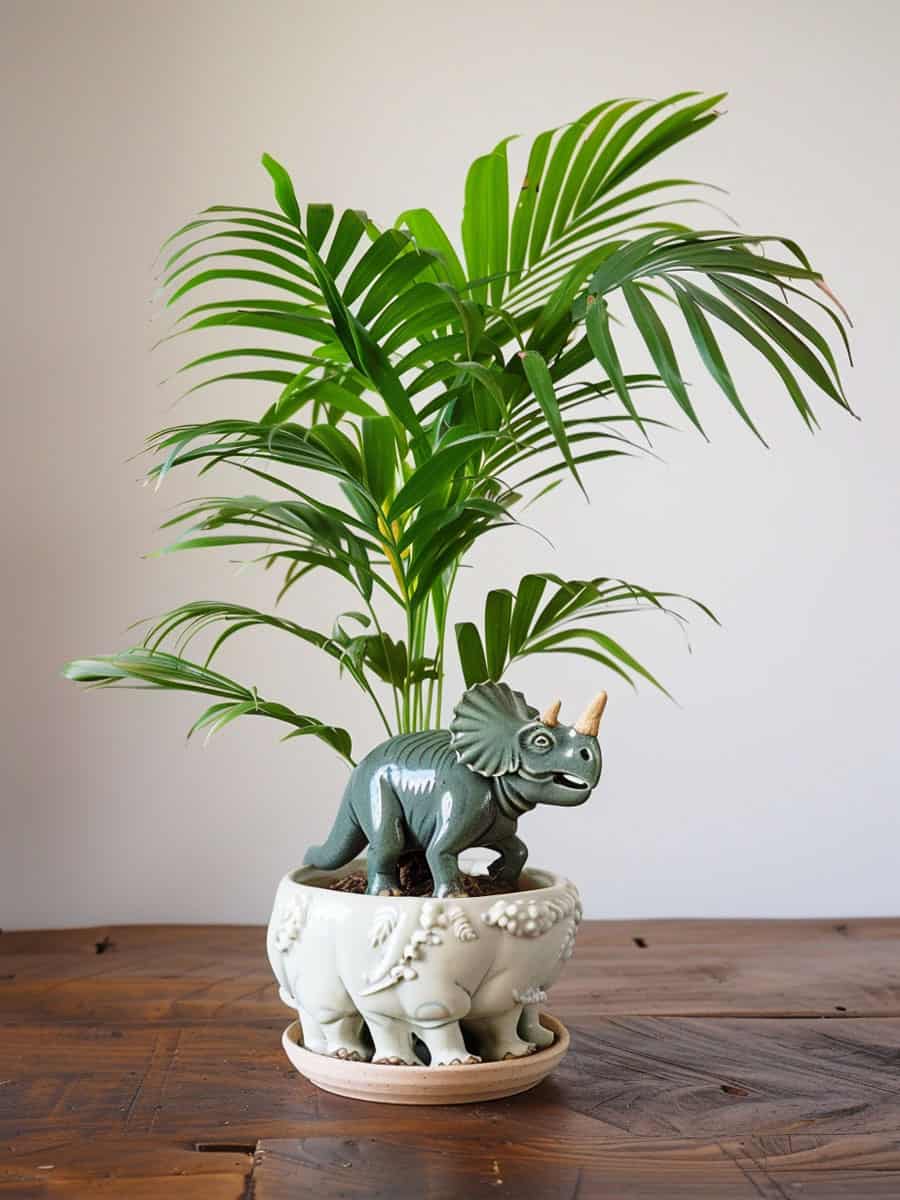
Give a nod to your parlor palms ancient origins - they've been on earth for 85 million years! - with a creative planter like this one featuring a triceratops. Or, find a fun planter in the shape of any animal of your choice.
11. Plant Joy
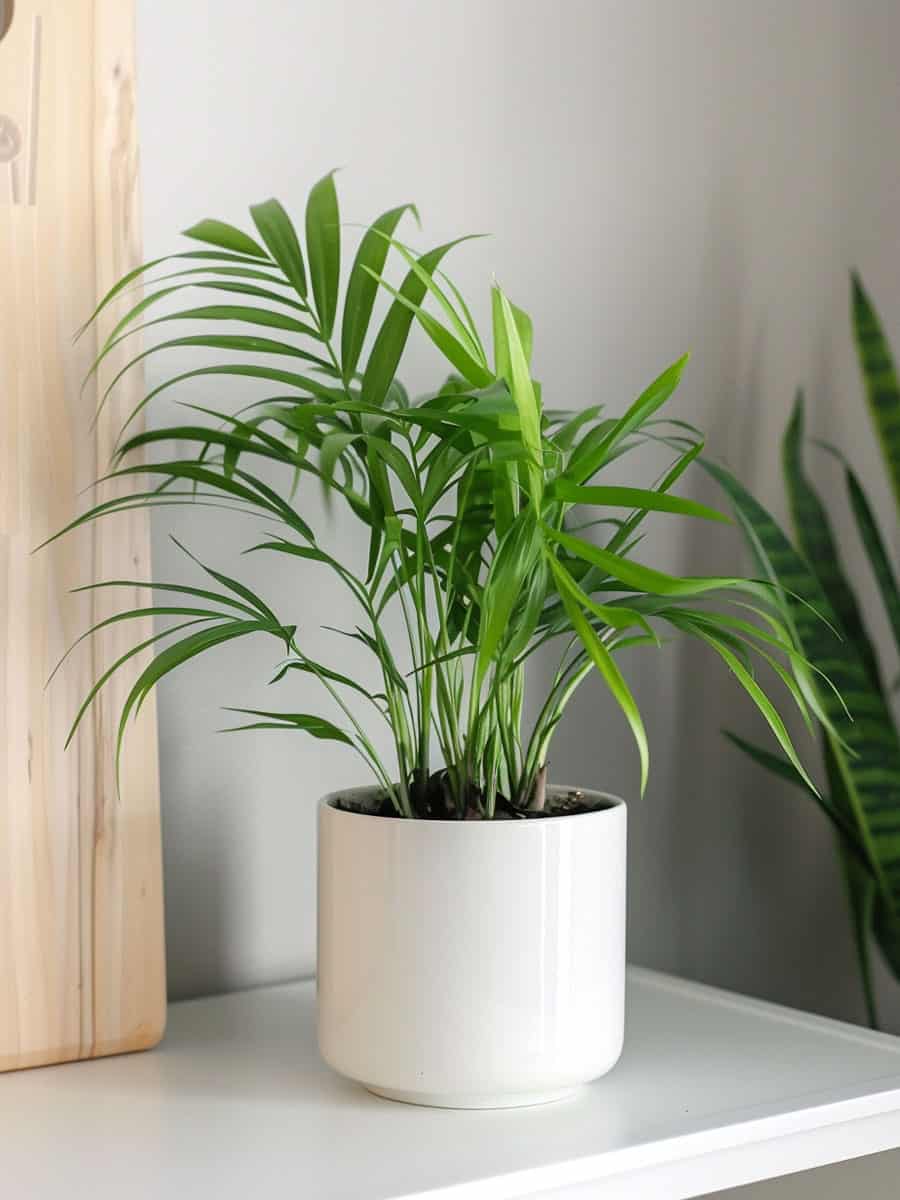
Show off your plant love by pairing your parlor palm with a word board, as shown in this picture. It's an aesthetically pleasing way to tell the world how happy plants make you!
12. Urban Retreat
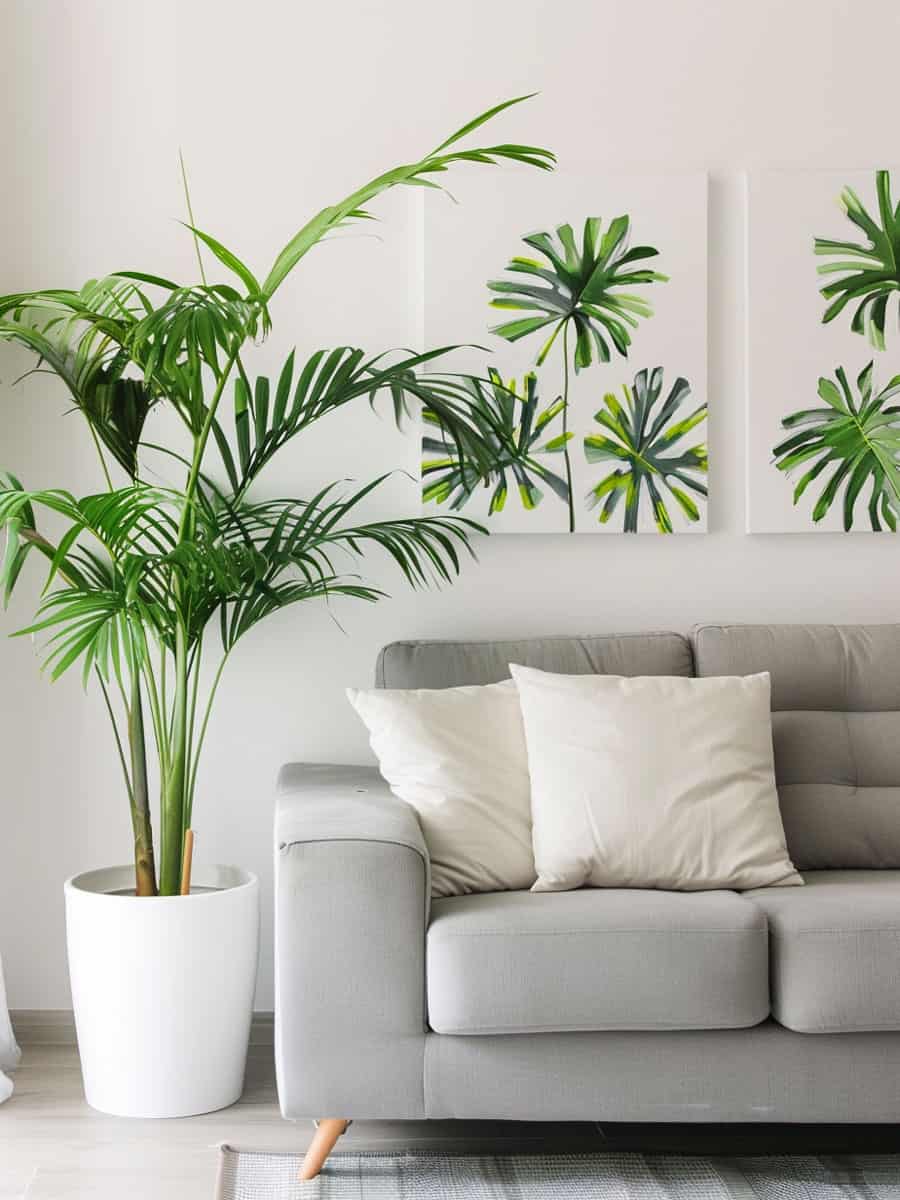
Not only does this simple living room have lots of plant pictures on the wall, but it also has real live plants throughout the room, including a parlor palm. The combination of real and artistic plants creates the look of a lush, tropical retreat.
13. Live Life in Full Color
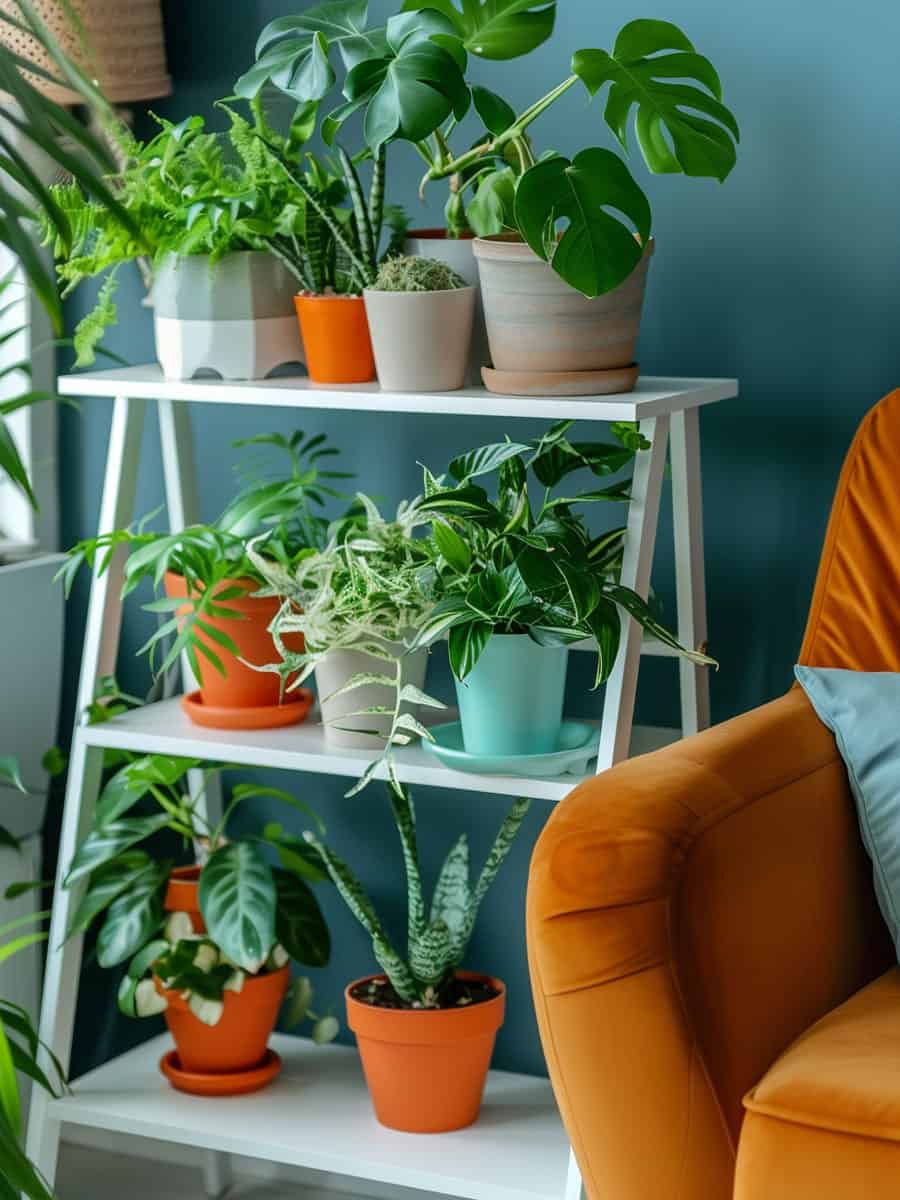
Bright shades of orange, turquoise, and yellow are the perfect accompaniment for the brilliant greens of parlor palms.
14. Dreamy Textures
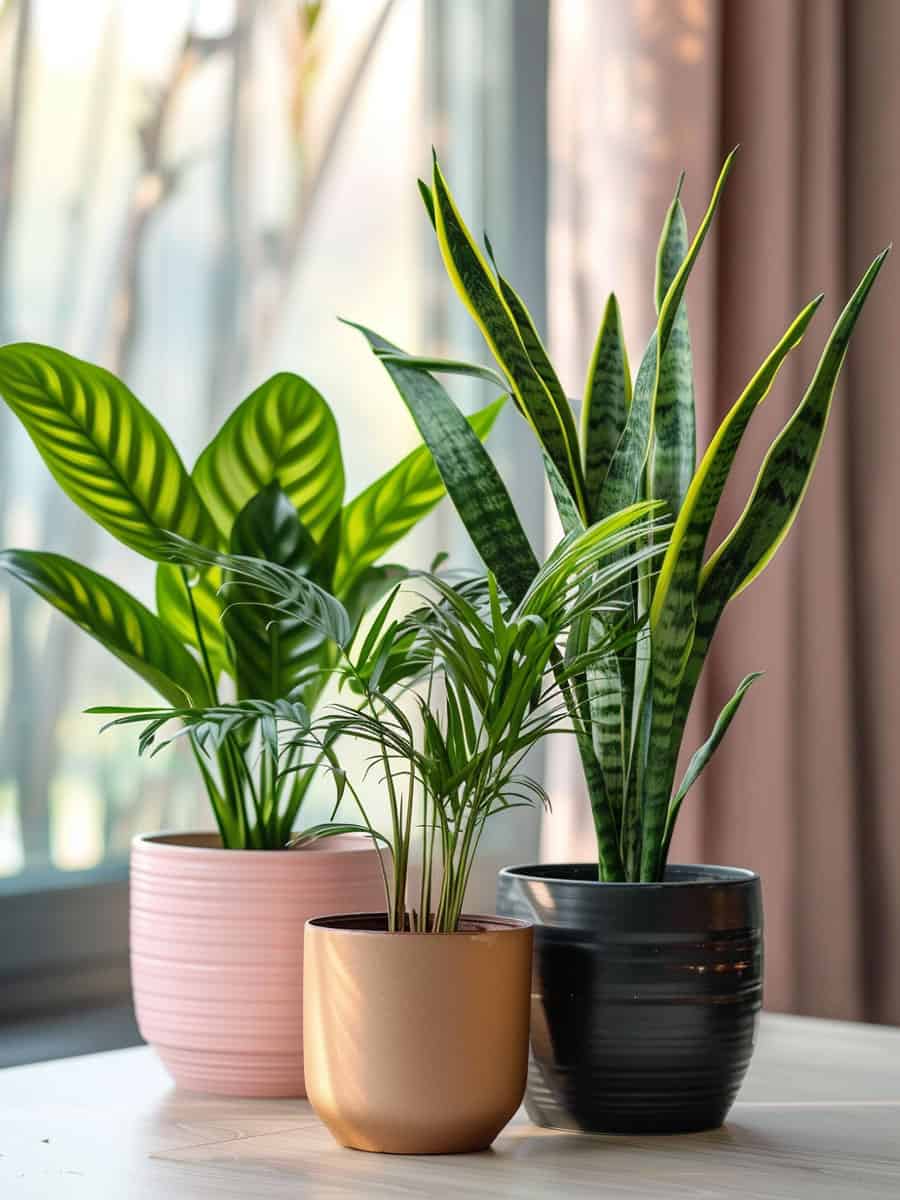
If you have multiple parlor palms, try planting them in a collection of pots with different colors and textures that create a cohesive look.
15. Natural is Best
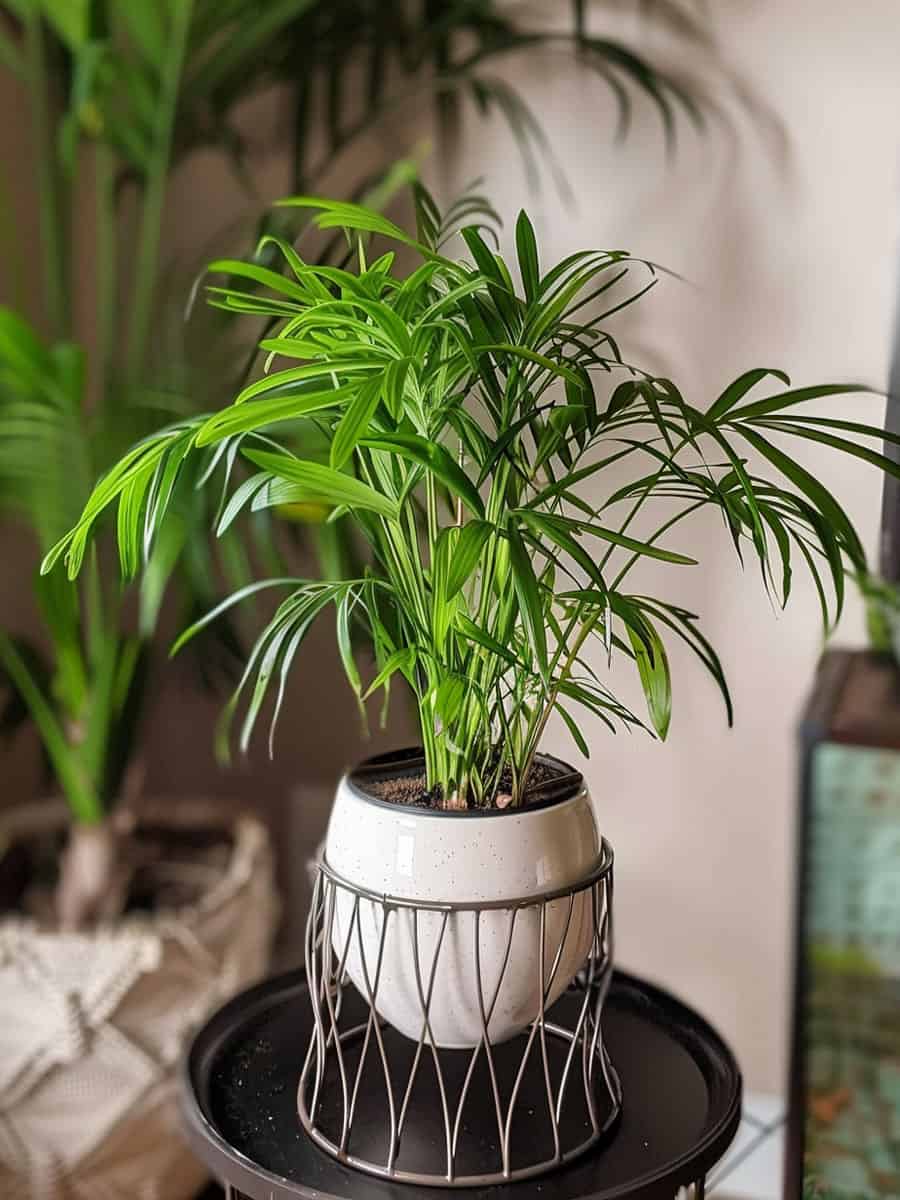
Create a relaxing, natural vibe by casually piling your plants on and around a bench. This parlor palm is resting in a wire holder, but you could just as easily place its large pot on the ground.
Where to Buy This Plant Online?
Since the parlor palm grows so slowly, one of the easiest ways to grow it is from a live plant. American Plant Exchange offers a parlor palm seedling in a 6" pot. Just re-pot it in a larger pot, water it lightly, and you'll be well on your way to having a new plant companion.
If you'd like to flex your gardening skills, try growing your parlor palm from seed! Just follow the directions from earlier in this article to have healthy little seedlings in a few weeks.
Click here to view parlor palm seeds on Amazon.
Are you interested in expanding your indoor palm collection? Check out our article, "The Majesty Palm Care Guide (Inc. Indoor and Outdoor)", to learn about another great type of indoor palm, the majesty palm!

